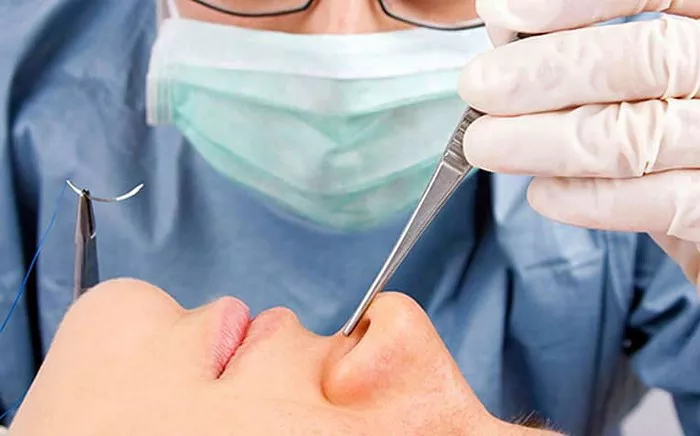Uneven nostrils can be a source of concern for many individuals seeking a balanced and symmetrical facial appearance. Correcting uneven nostrils requires careful assessment and appropriate techniques tailored to each individual’s unique anatomy. As a rhinoplasty expert, I will outline eight professional tips to help correct uneven nostrils.
Understanding the Causes of Uneven Nostrils
Genetic Factors
Many people are born with slight asymmetries in their nostrils due to genetic factors. These differences can become more pronounced over time.
Trauma
Injuries to the nose can result in uneven nostrils. Trauma can cause cartilage displacement or soft tissue damage, leading to asymmetry.
Previous Surgery
Previous rhinoplasty or other nasal surgeries can sometimes lead to uneven nostrils if not performed correctly or if complications arise during healing.
Developmental Issues
Conditions like a deviated septum or congenital deformities can contribute to uneven nostrils. These developmental issues often require surgical intervention for correction.
Tip 1: Comprehensive Consultation and Assessment
Initial Consultation
A thorough initial consultation is crucial. During this consultation, the surgeon will evaluate the patient’s medical history, previous surgeries, and the specific concerns regarding nostril asymmetry.
Physical Examination
A detailed physical examination of the nose is necessary. This examination includes assessing the septum, cartilage, and soft tissues to determine the underlying cause of the asymmetry.
Imaging Techniques
Advanced imaging techniques, such as 3D imaging, can provide a comprehensive view of the nasal structures. These images help in planning the surgical approach and predicting the outcomes.
See Also: 7 Reasons Why Your Eyes May Bruise After Rhinoplasty
Tip 2: Customized Surgical Plan
Individualized Approach
Every patient is unique, and a one-size-fits-all approach does not work in rhinoplasty. A customized surgical plan tailored to the patient’s specific needs and anatomical features is essential.
Balancing Function and Aesthetics
The surgical plan should focus on achieving both functional and aesthetic goals. Ensuring proper nasal airflow while correcting asymmetry is crucial for overall satisfaction.
Tip 3: Cartilage Grafting Techniques
Harvesting Cartilage
Cartilage grafting is often used to correct uneven nostrils. Cartilage can be harvested from the septum, ear, or rib, depending on the amount needed and the specific requirements of the surgery.
Shaping and Placement
The harvested cartilage is carefully shaped and placed to provide support and symmetry. Proper placement is crucial for achieving a natural and balanced appearance.
Tip 4: Precision in Incision and Suture Techniques
Incision Placement
Precise incision placement is critical in rhinoplasty. Incisions should be strategically placed to minimize visible scarring and ensure proper access to the nasal structures.
Suture Techniques
Advanced suture techniques are employed to secure cartilage grafts and reshape the nostrils. These techniques help in achieving stable and long-lasting results.
Tip 5: Addressing Soft Tissue Concerns
Soft Tissue Manipulation
In some cases, soft tissue manipulation is necessary to achieve symmetry. This may involve trimming excess tissue or repositioning it to create a balanced appearance.
Fat Grafting
Fat grafting can be used to add volume to areas with soft tissue deficiency. This technique helps in achieving a more symmetrical and natural look.
Tip 6: Post-Surgical Care and Monitoring
Follow-Up Visits
Regular follow-up visits are essential to monitor the healing process. The surgeon will assess the results and address any concerns or complications that may arise.
Proper Wound Care
Proper wound care instructions should be provided to the patient. Keeping the surgical site clean and following the surgeon’s guidelines is crucial for optimal healing.
Tip 7: Non-Surgical Options
Dermal Fillers
In some cases, non-surgical options like dermal fillers can be used to correct minor asymmetries. Fillers can provide temporary solutions by adding volume and reshaping the nostrils.
Botox Injections
Botox injections may be used to address muscle imbalances that contribute to nostril asymmetry. These injections can provide temporary relief and improve overall appearance.
Tip 8: Managing Expectations
Realistic Goals
It’s important for patients to have realistic goals and understand the limitations of the procedure. While significant improvements can be achieved, perfect symmetry is not always possible.
Open Communication
Open communication between the patient and surgeon is vital. Discussing the potential outcomes, risks, and benefits helps in managing expectations and achieving satisfaction.
Conclusion
Correcting uneven nostrils requires a combination of expertise, precision, and individualized care. By following these eight tips, patients can achieve a more balanced and symmetrical appearance while maintaining proper nasal function. Consulting with a skilled rhinoplasty expert and understanding the process can lead to successful outcomes and enhanced confidence.
Related topics:

